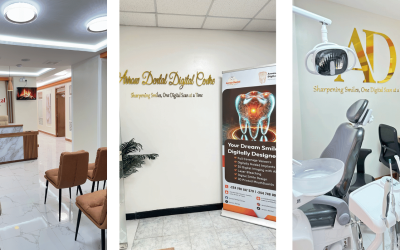Dental braces are a common and effective treatment for straightening teeth and improving dental health. Braces use a system of brackets, wires, and elastics to gradually move the teeth into their proper position. Several different types of braces are available, each with its own benefits and drawbacks. In this article, we will discuss the different types of braces and their features.
Types of dental braces
Metal Braces
The most common type of braces is traditional metal braces. These braces consist of metal brackets bonded to the front of the teeth and a metal wire that runs through the brackets. The wire is tightened over time to gradually move the teeth into their proper position. Traditional metal braces are the most affordable option but also the most visible.
Advantages
Traditional metal braces are the most affordable option and can effectively treat many orthodontic problems. They are also durable and can withstand the rigours of everyday use.
Disadvantages
Traditional metal braces are the most visible type, so they may not be the best option for people self-conscious about their appearance. They can also be uncomfortable and irritate the gums and cheeks.
Ceramic Braces
Clear ceramic braces are another option. These braces are made of clear or tooth-coloured ceramic material, making them less visible than traditional metal braces. They function the same way as metal braces but are more expensive and may be more prone to breaking.
Advantages
Clear ceramic braces are less visible than traditional metal braces and can be more aesthetically pleasing. They are also more comfortable than metal braces and may cause less irritation to the gums and cheeks.
Disadvantages
Clear ceramic braces are more expensive than traditional metal braces and may be more prone to breaking. They may also be more difficult to clean and maintain.
Lingual Braces
Lingual braces are a type of braces that are attached to the back of the teeth rather than the front. This makes them less visible than traditional braces, but they can be more difficult to clean and may cause discomfort initially. They are also more expensive than conventional braces.
Advantages
Lingual braces are attached to the back of the teeth, making them the least visible type of braces. They can effectively treat many orthodontic problems and may be more comfortable than traditional braces.
Disadvantages
Lingual braces are the most expensive and may be more difficult to clean and maintain. They can also cause discomfort initially and may not be suitable for people with small teeth or mouths.
Invisalign Aligners
Invisalign aligners are a type of braces that are almost invisible and can be removed for eating, brushing, and flossing. They are custom-made from clear plastic and are designed to fit snugly over the teeth. Invisalign aligners are the most expensive option but also the most convenient and comfortable.
Advantages
Invisalign aligners are almost invisible and can be removed for eating, brushing, and flossing. They are custom-made from clear plastic and are designed to fit snugly over the teeth. They are also the most convenient and comfortable type of braces.
Disadvantages
Invisalign aligners are the most expensive braces and may not be suitable for treating more severe orthodontic problems. They also require a high level of compliance, as they must be worn for at least 22 hours daily to be effective.
Self-ligating braces
Self-ligating braces use a special mechanism to hold the wire, allowing for more efficient tooth movement. They are less visible than traditional braces and may be more comfortable, but they are also more expensive.
Advantages
Self-ligating braces are less visible than traditional braces and may be more comfortable to wear. They also allow for more efficient tooth movement, which can shorten the treatment time.
Disadvantages
Self-ligating braces are more expensive than traditional braces and may not be suitable for treating more severe orthodontic problems. They may also require more frequent adjustments.
Functional braces
Functional braces are often used in children to correct problems with the jaw and bite. They are worn on the upper and lower teeth and use a system of springs and elastics to apply pressure and move the teeth into their proper position.
Advantages
Functional braces are often used in children to correct problems with the jaw and bite. They are effective for treating many orthodontic issues and can improve the appearance and function of the teeth and jaws.
Disadvantages
Functional braces are visible and may cause discomfort in the beginning. They may also require more frequent adjustments and may not be suitable for adults.
It’s important to discuss the different types of braces with your orthodontist to determine the best option for your needs.
Benefits of dental braces
Dental braces are a common and effective treatment for straightening teeth and improving dental health. There are several benefits to getting braces, including:
- Improved appearance and smile: Braces can straighten crooked or crowded teeth and correct problems with the bite, giving you a more attractive and healthy-looking smile. This can boost your confidence and improve your overall quality of life.
- Improved ability to eat and speak: Misaligned teeth can make it difficult to chew and speak properly. Braces can help align the teeth and improve your eating and speaking skills, making it easier to eat a healthy diet and communicate effectively.
- Improved oral health: Braces can help maintain the alignment of the teeth and prevent problems such as tooth decay and gum disease. This can improve your overall oral health and reduce your risk of tooth loss and other dental problems.
Conclusion
Dental braces are a common and effective treatment for straightening teeth and improving dental health. Several different types of braces are available, each with its advantages and disadvantages. It’s important to discuss the options with your orthodontist to determine the best kind of braces for your needs.




